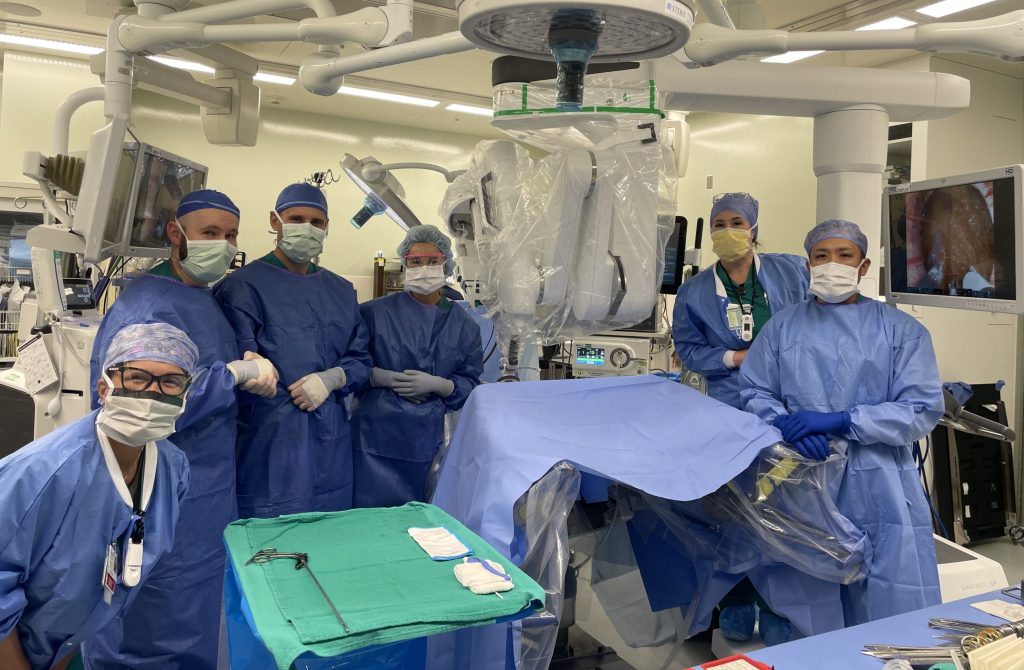The Omicron variant of COVID-19 has taken firm hold in the United States. Infectious disease specialist Dr. Gary Green explains why that is, plus how to help maximize your chances of staying healthy this winter.
Omicron is highly transmissible
The first case of Omicron was detected in the U.S. on Nov. 22. Thirty days later, CDC Director Dr. Rochelle Walensky said Omicron accounted for half of all new COVID-19 cases and 90% of cases in some parts of the country.
“Omicron is the most contagious variant we’ve seen during the pandemic, surpassing even Delta,” says Dr. Green, who is with Sutter Medical Group of the Redwoods.
Omicron is highly catchy. Here’s how we know. A virus’ infection rate – the average number of infected contacts per infected individual – is measured as Ro or Basic Reproduction Number. Original SARS-CoV-2 from China has Ro ~2.79 and the Delta variant has Ro ~5.08. The Omicron variant has Ro 7.0 or greater. Dr. Green says this means one case of Omicron infection can result in more than seven other infections. For perspective, the Ro for seasonal influenza is roughly 1.2 and the Ro for mumps is 7. The Ro for measles is 12-18.
“While Omicron’s spread is swift, it’s less virulent, particularly among a highly vaccinated people,” says Dr. Green. This is good news about where the population is headed.
“Similar to the progression 1918 pandemic, Omicron is the first predominant strain to be less virulent (or severe) and may mark an evolutionary turn towards becoming more endemic.”
Dr. Green says the next few weeks will be telling. Millions gathered to celebrate the holidays, so communities will have to see if there’s an uptick in COVID-19 cases and, more importantly, COVID-19 hospitalizations. While there are reported breakthrough COVID-19 infections in vaccinated individuals, there is encouraging news on that front. “Vaccinated individuals are shown to do much better with the virus, showing mild symptoms, and able to avoid severe sickness,” says Dr. Green.
In addition to COVID-19, other cold weather viruses like the flu are coming back.
Influenzas is returning
Flu season, which fizzled to nearly nonexistent levels in 2020, has reappeared and is on the rise. “It’s picking up a little in California,” says Dr. Green. He says viruses like RSV, parainfluenza, adenovirus and rhinovirus are also circulating as people are traveling and gathering with extended friends and families.
“This is the second winter we’ll have to live with COVID-19, and everyone is tired,” Dr. Green said. “We still need to maintain our vigilance and exercise caution. The pandemic isn’t over, but hopefully we’re closing in on the beginning of the end.”
In the meantime, Dr. Green offers key points to help get you and your loved ones through the winter successfully:
- Get vaccinated and get a COVID vaccine booster. Boosters are safe and effective.
- Stay home if sick. Do not venture out or go to work ill, even with mild symptoms. You may unintentionally spread sickness to others.
- Keep your home/community bubbles small. Minimize mixing with large groups, especially with unvaccinated individuals or groups.
- Know for sure. Get tested to know for sure if you have COVID-19.
- Continue with public health measures. In public, wearing a mask, frequent handwashing and social distancing remain effective strategies to avoid getting ill from all respiratory viruses.
- Stay current on COVID information. For example, the CDC has shortened the recommended time for isolation from 10 days to five days, if asymptomatic, followed by five days of wearing a mask when around others.





